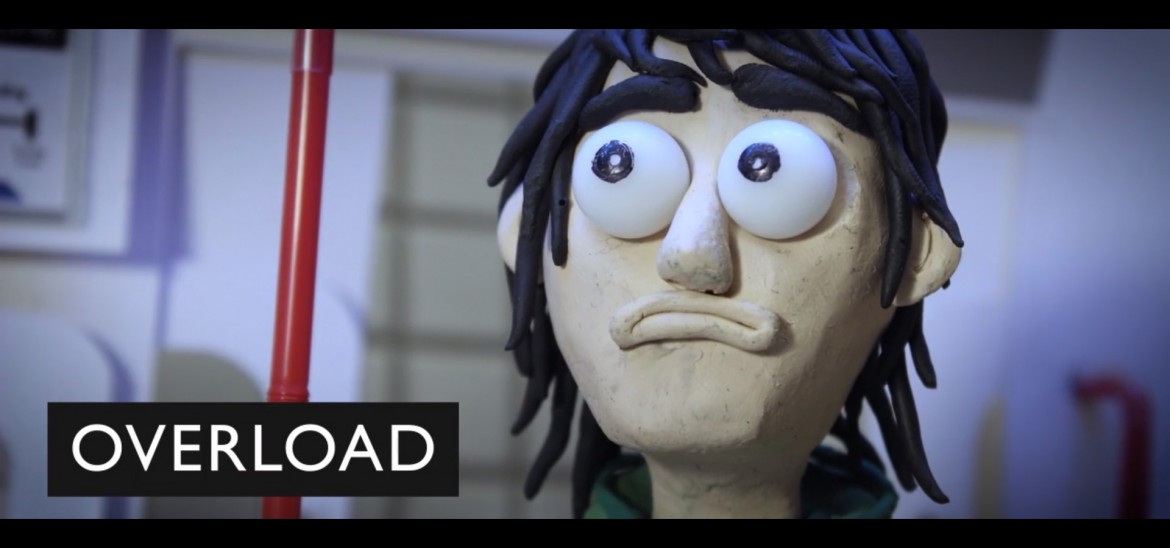Into Film Clubs
Find out everything you need to know about starting an Into Film Club.



Following on from the update of our popular Let's Talk About Autism: Using Film to Raise Awareness article last week, we're excited to present a brand new one just in time for the start of Autism Awareness Week (29 March - 4 April).
Long-term Education Ambassador and regular editorial contributor Grace Eardley is currently completing her PHD on using film with neurodiverse learners, and has written a brilliant piece on how Into Film's youth-made films and its resources can be used to showcase the extensive skills and unique perspectives of young people with Autism Spectrum Disorders (ASD).
Before I properly get started, I just want to acknowledge that autism is understood as a spectrum and although individual learners may share common characteristics, it is really important to remember that everyone is different. Strategies and support that work for one person do not necessarily work for another. As teachers you will know your learners and your context, but it is always worthwhile to be reminded of this.
Into Film Award winner Joe Blandamer and his animation Overload are a perfect example of how a young person with ASD can channel their unique experiences, personal perspective and individual strengths into the medium of film. I would encourage you to watch this short film and share it with your learning groups.
What struck me particularly about Joe's animation is his dedication and eye for detail. The film draws on Joe's own experiences of ASD and shows what it's like to be in a triggering situation; in this case, feeling overwhelmed on a crowded underground train. Every single tiny nuance of being on a train is detailed, from the small print on advertisements to the close-ups of characters chewing. This real keen eye for detail shows the intensity of the situation for Joe and is also the perfect skill for both a filmmaker and watcher! This film, along with other youth-made shorts on the theme such as Autism Awareness, are a great stimulus for opening up discussions about autism. This is for both teachers and students who may not be fully aware of the many unique ways those with ASD experience the world and the day-to-day challenges they might face. Check out both of those films below as well as recent Film of the Month winner, Fish out of Water.
Dan Ackroyd - the writer and star of Ghostbusters - attributes some of the film's success to his autism. He says it gave him a unique way of seeing the world and made him extremely driven to research any given topic. As a child, Ackroyd's obsession with ghosts saw him undertake hours and hours of research, which then formed the basis of the 1980s classic. In a similar way, film historian Andrew Roberts says his autism allows him to spot patterns across different films; ones that others would never notice. In my own classroom experiences, two talented aspiring filmmakers with ASD immediately spring to mind. One, whose keen eye for detail originally developed through photography, became a master of cinematography and the ‘go-to guy' for spotting continuity errors on set. Another student really found their place in the editing process, and after joining our Into Film Club in year 7, quickly found that the sixth formers, myself and the media technicians were asking them for technical editing advice and help. I suspect this latter example of peer recognition amongst older students was really encouraging for this student and was a great self-esteem booster in the mainstream school setting; a place where those with ASD often face many day-to-day challenges.
Pretty much all teaching advice for ASD advocates for teachers to actively recognise the individual's strengths and personal interests. From my experiences of using film in teaching, I find that it is useful to get a sense of the the group's interests and strengths through general reflections about films. It is usually easy to spot when you hit upon a personal passion, and you can then build resources and club activities around these. If you have a film or topic in mind, the Into Film website allows you to use a simple ‘key word' search so you can access the vast catalogue of resources and films really quickly.
In terms of supporting alternative modes of communication when exploring ideas about films, I really like the Communication Symbols For Film Reviewing resource. This contains over seventy images so does not rely solely on verbal communication, and can easily be used beyond film reviewing. It can support learners with sharing their perspectives on films generally or could support with visual timetabling and aiding the transition back to school. Willowbank School show how they have used this resource to great effect. Make sure to explore the variety of other SEN specific resources such as the Engaging Films for SEN Audiences film list, most of which can be found on the SEN/ASN theme page.
In the home learning environment and in the regular classroom, I have found using shorts and the short film clips embedded in many of the Into Film resources to be useful in terms of flexibility, but also a great way of modulating various levels of sensory input. As Joe depicts so neatly in Overload, sounds, colours and lights can cause varying levels of distress for some people with ASD. Not only are these small in file size so are easy to share online but the multi-sensory aspect of short film clips can be adapted and used in partnership with resources such as the sound off/sound on activity, whereby learners build inferences and predictions around a film clip by using one sense at a time. This also has some additional literacy benefits as you can use the clips to form the basis of stories or poems. Educators can also find useful shorter clips from lots of popular films within the newer PowerPoint film guides.
As a final note, it is important for us teachers to recognise the hard work of all our learners but especially neurodiverse ones. We are all facing challenges, but it can be easy to overlook the various day-to-day challenges education can bring for learners with additional needs. These young people might be working twice as hard as their neurotypical peers. A great way to showcase talents and offer recognition is to host screenings, engage them with the resources I've mentioned above and to encourage any filmmakers to enter competitions such as Film of the Month and the Into Film Awards.
Grace can be found on Twitter and frequently blogs about her research.

Multi-award-winning animated documentary short about living with autism.
Certificate
Viewing 4 of 4 related items.

Get in touch with your article ideas for the News and Views section.